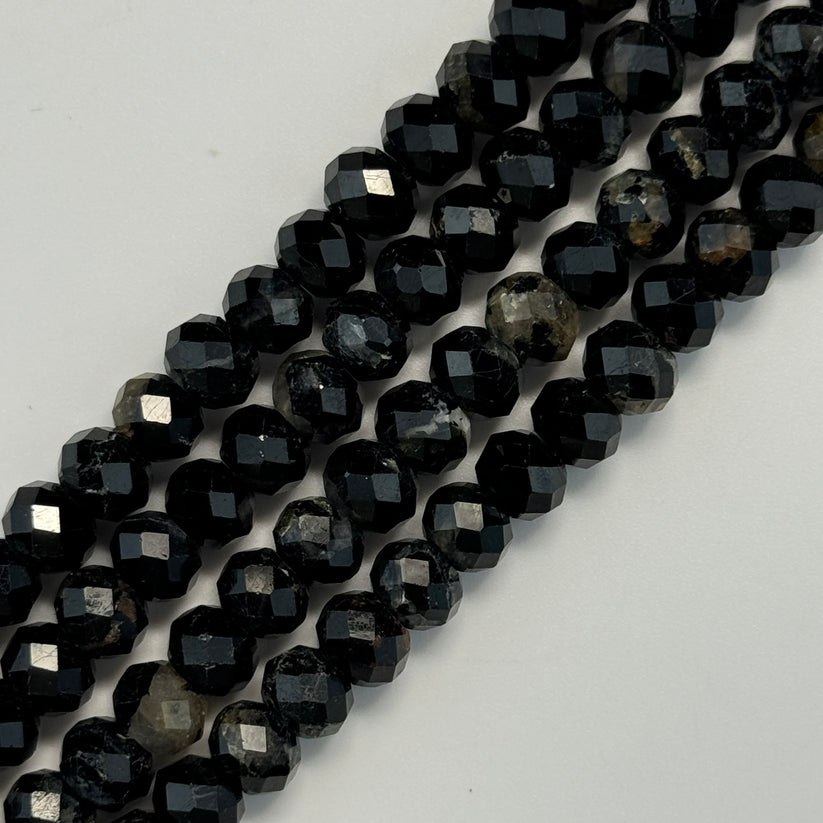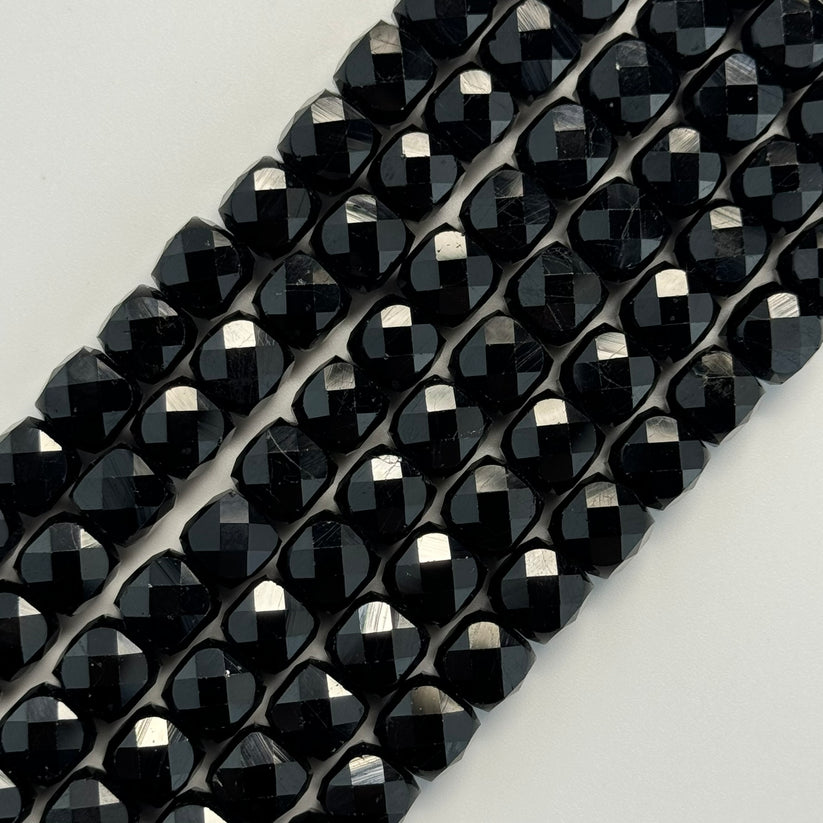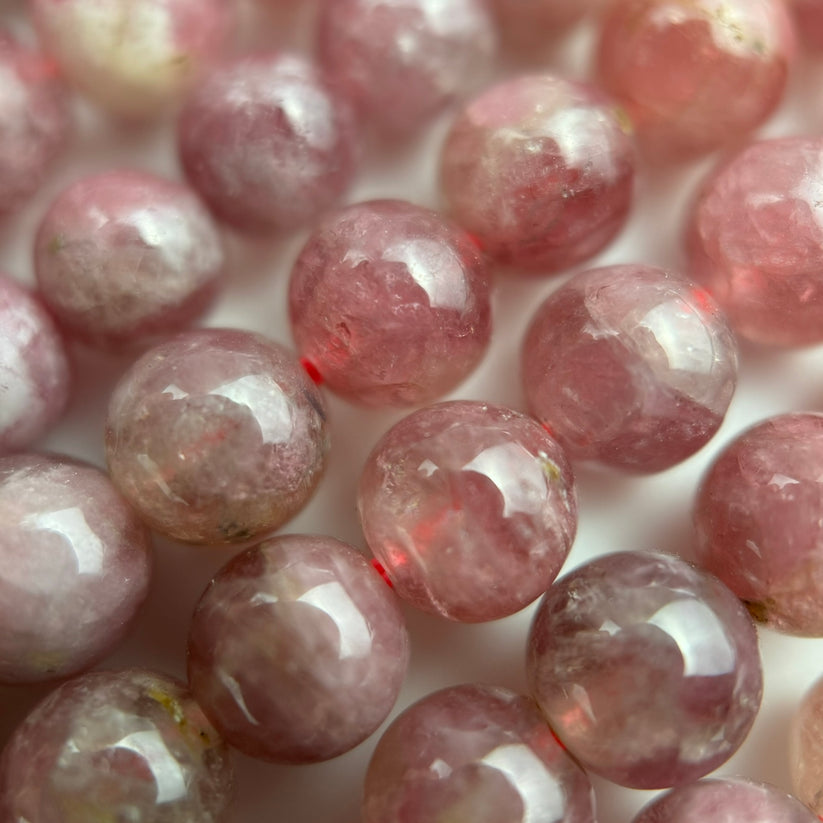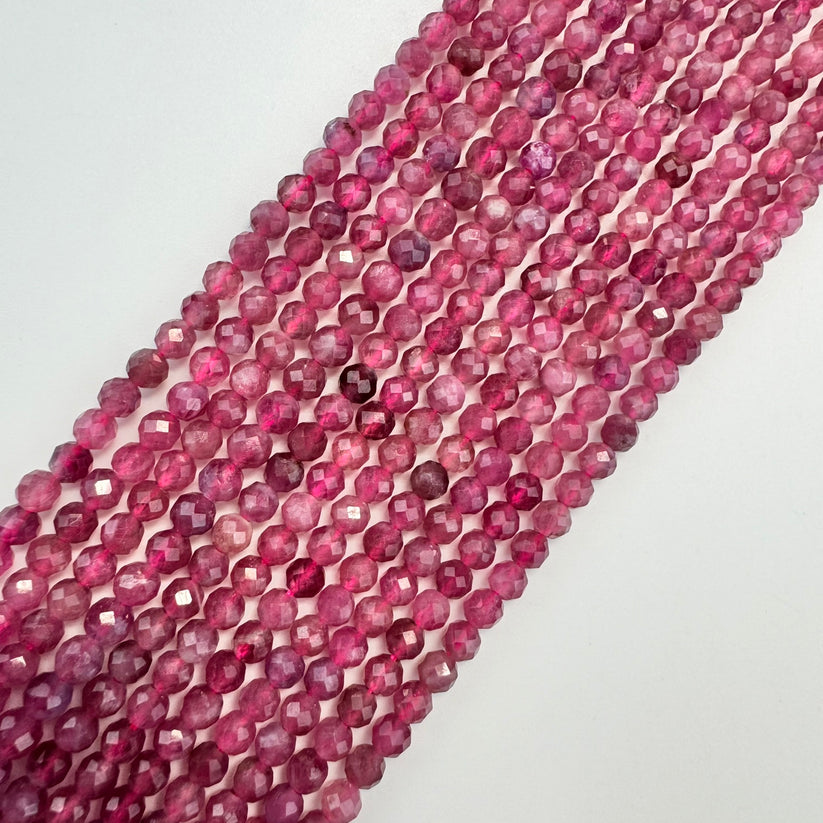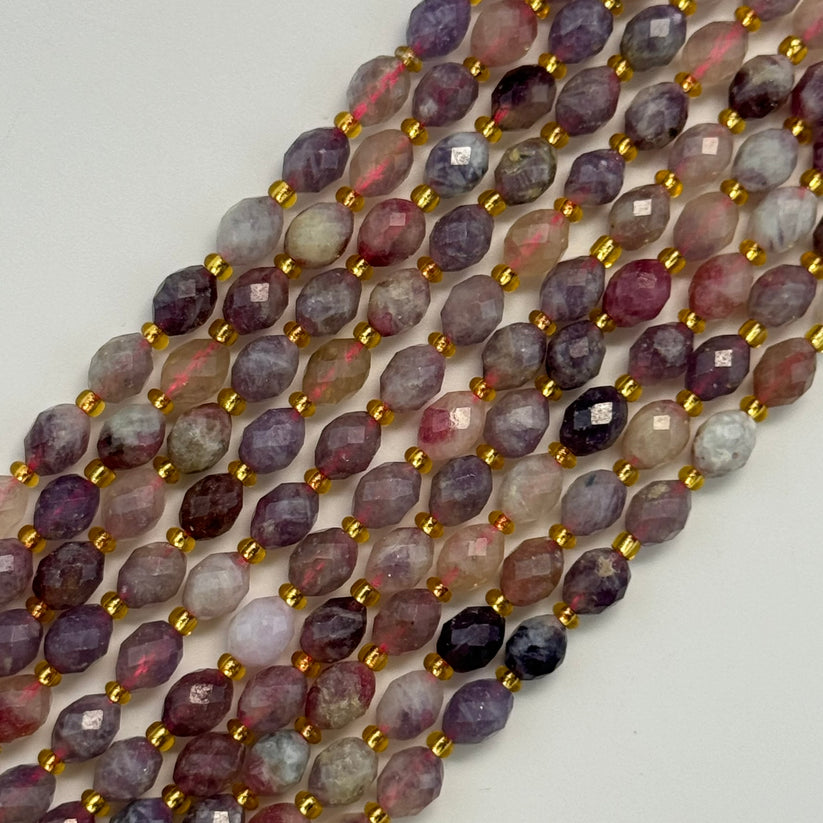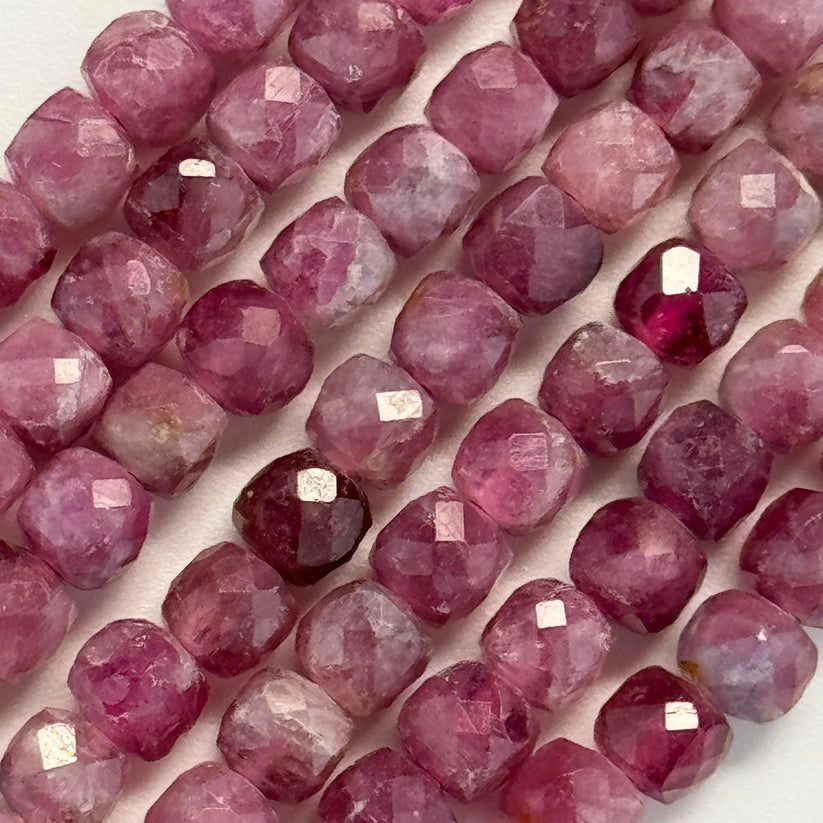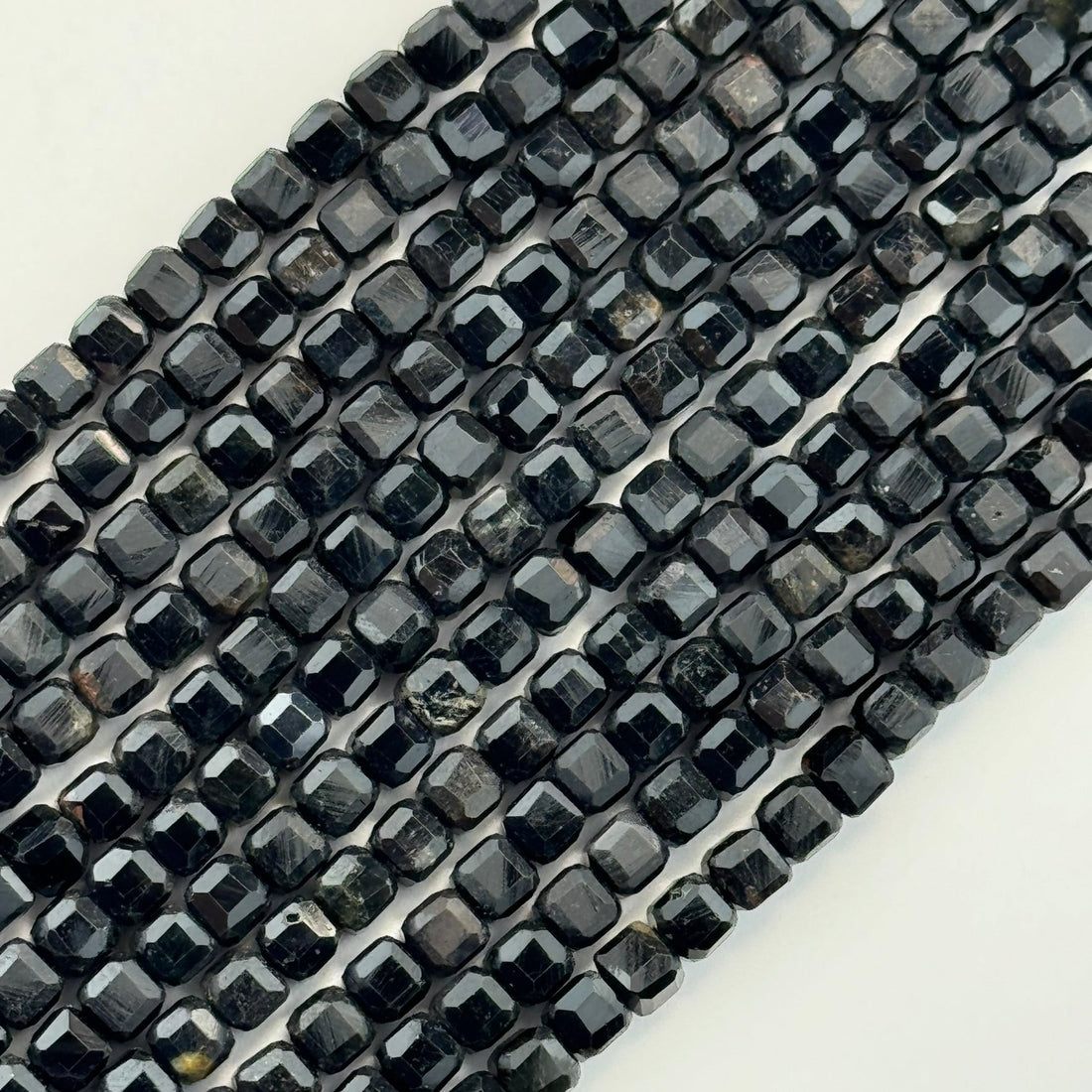
Black Tourmaline: Scientific Insights and Properties
Share
Black Tourmaline Products
Black tourmaline, also known as schorl, is a fascinating mineral valued for its scientific properties and metaphysical significance. This unique gemstone is known for its deep black color, high durability, and ability to generate electrical charges. In this article, we explore its geological formation, chemical composition, physical properties, and various applications.
If you are interested to view all our tourmaline Collection please click here
Benefits of Black Tourmaline Stone
Black Tourmaline is widely known for its powerful protective qualities. It is believed to absorb and dispel negative energy, making it an excellent stone for spiritual and emotional protection. Many people use Black Tourmaline to shield themselves from environmental stressors such as electromagnetic fields (EMFs) emitted by electronics and other harmful energies. Its grounding effect is also said to create a sense of stability and calm, making it ideal for those looking to restore balance in their lives.
In addition to its protective properties, Black Tourmaline is often used for emotional healing. It is thought to help relieve anxiety, stress, and negative thoughts, promoting emotional resilience. People who wear or carry Black Tourmaline report feeling more centered and protected from emotional upheavals. Its calming influence can aid in reducing feelings of fear and negativity, allowing the wearer to feel more confident and secure.
On a physical level, Black Tourmaline is believed to have healing properties that support overall wellness. It is thought to improve circulation, boost the immune system, and promote detoxification in the body. Some also believe it helps relieve pain and discomfort, particularly in the lower back and joints. As a result, Black Tourmaline is not only a spiritual tool but also a gemstone that can provide holistic benefits for the mind, body, and spirit.
black tourmaline healing properties
Black Tourmaline is widely known for its healing properties, particularly in energy protection and emotional stability. This powerful gemstone is believed to absorb negative energy, creating a protective barrier that shields the wearer from emotional distress and external influences. Many people use Black Tourmaline to reduce anxiety, stress, and unwanted energy, making it an essential stone for emotional well-being.
In addition to its protective qualities, Black Tourmaline is thought to promote mental clarity and focus. By grounding scattered thoughts and stabilizing emotions, it helps individuals remain centered during stressful situations. This makes it a valuable stone for those dealing with overwhelm, emotional exhaustion, or negativity, as it encourages a sense of calm and balance.
Physically, Black Tourmaline is often associated with improving circulation and boosting the immune system. Some believe it aids in detoxification by helping the body release toxins and harmful energies. It is also thought to relieve pain, support the nervous system, and strengthen the adrenal glands, making it a popular choice in holistic healing practices.
Spiritually, Black Tourmaline is deeply connected to the Root Chakra, which governs stability, security, and grounding. By aligning this chakra, the stone helps individuals feel more secure, confident, and connected to the present moment. This grounding effect is especially beneficial for those who experience feelings of restlessness, fear, or uncertainty.
Whether worn as jewelry, placed in living spaces, or used in meditation, Black Tourmaline is a versatile and powerful gemstone for protection, balance, and overall well-being. Its ability to neutralize negative energy and enhance emotional resilience makes it a favorite among those seeking both physical and spiritual healing.
Black Tourmaline and Pink Tourmaline: October Birthstone Choices
Tourmaline is the official birthstone for October, and its wide array of colors makes it a versatile and popular choice for this month. Among the most admired varieties of tourmaline are pink tourmaline and black tourmaline. While pink tourmaline is widely recognized for its loving and compassionate energy, black tourmaline is prized for its protective and grounding properties. Both stones, though different in appearance and energy, are celebrated as October birthstones for their unique healing qualities.
Pink tourmaline is often associated with emotional healing, love, and compassion. Its soft, pink hues are perfect for individuals seeking balance in their emotional life and a deeper connection to their heart chakra. This variety of tourmaline is believed to foster self-love, promote positive relationships, and support emotional well-being. It's a beloved choice for jewelry, including rings, bracelets, and necklaces, as it not only carries a beautiful aesthetic but also offers a healing energy for its wearer.
To learn about Choosing Between Black Tourmaline and Pink Tourmaline Beaded Gemstones for Jewelry Making Click here
Pink Tourmaline Products
On the other hand, black tourmaline is known for its powerful protective properties. As a grounding stone, it is believed to absorb negative energy, creating a shield of protection for the wearer. Though not as commonly celebrated for emotional healing like pink tourmaline, black tourmaline is often chosen for its ability to protect against electromagnetic radiation and negative influences. It's a great alternative for those who prefer a more protective energy or who need to feel more grounded.
Formation and Geological Occurrence
How Black Tourmaline Forms
Black tourmaline forms in igneous and metamorphic rocks under high-pressure conditions. It is commonly found in granite, pegmatites, and schist. The mineral crystallizes in elongated, prismatic structures, which contribute to its distinct appearance.
Major Deposits Worldwide
Significant deposits of black tourmaline are found in various locations around the world, including:
-
Brazil – Known for producing high-quality black tourmaline specimens.
-
Madagascar – Hosts large deposits of well-formed crystals.
-
United States (California & Maine) – Produces gem-quality black tourmaline.
-
Pakistan & Afghanistan – Rich sources of black tourmaline embedded in granitic rocks.
Chemical Composition and Physical Properties
Chemical Formula
Black tourmaline belongs to the tourmaline group, with the general chemical formula NaFe3(Al,Fe)6(BO3)3Si6O18(OH)4. The presence of iron (Fe) gives black tourmaline its characteristic deep black color.
Crystal Structure
Black tourmaline crystallizes in the trigonal system, forming elongated, vertically striated prisms. The structure consists of complex borosilicate chains with aluminum, iron, and other trace elements.
Key Physical Properties
-
Color: Deep black
-
Luster: Vitreous to submetallic
-
Hardness: 7-7.5 on the Mohs scale
-
Density: 3.06 g/cm³
-
Cleavage: Indistinct
-
Fracture: Uneven to conchoidal
-
Streak: White to light gray
Unique Electrical and Magnetic Properties
One of the most distinctive features of black tourmaline is its pyroelectric and piezoelectric properties:
Pyroelectricity
Black tourmaline can generate an electrical charge when exposed to temperature changes. This property allows it to attract small particles, such as dust and lint.
Piezoelectricity
When subjected to mechanical pressure, black tourmaline produces an electric charge. This makes it valuable in scientific and industrial applications, including pressure sensors and electronic components.
Uses and Applications
Industrial and Scientific Applications
Due to its unique electrical properties, black tourmaline is used in:
-
Pressure sensors – Utilized in mechanical and electrical devices.
-
Electrostatic filters – Helps remove airborne particles.
-
Radiation shielding – Used in some protective materials due to its high iron content.
To learn More about Black Tourmaline: Scientific Insights and Properties click here
Why Is Black Tourmaline Called Schorl?
Black Tourmaline is commonly referred to as Schorl, a name that dates back centuries. The term Schorl originates from a small German village of the same name, where large deposits of Black Tourmaline were discovered. The mineral was widely recognized in the area long before modern gemology classified it as part of the Tourmaline family. Today, "Schorl" is still used to describe the black variety of Tourmaline, which is known for its protective and grounding properties.
Scientifically, Schorl is a complex boron silicate mineral that contains iron, which gives it its deep black color. Unlike other varieties of Tourmaline that can appear in vibrant hues like pink, green, and blue, Schorl is opaque and highly lustrous. Its composition makes it one of the most durable and abundant forms of Tourmaline, often found in igneous and metamorphic rocks worldwide.
Aside from its geological significance, Schorl has long been associated with spiritual and metaphysical protection. Ancient cultures believed it could ward off negative energy, protect against psychic attacks, and promote grounding and stability. Even today, many people wear Black Tourmaline jewelry or place the stone in their homes to create a protective energy field.
Whether referred to as Schorl or Black Tourmaline, this powerful stone remains a favorite in both scientific and metaphysical communities. Its rich history, strong protective qualities, and grounding energy make it one of the most valued gemstones for those seeking both physical and spiritual well-being.
Black Tourmaline in Jewelry
Black tourmaline is a popular gemstone in jewelry due to its durability and striking appearance. It is often cut into cabochons, beads, and faceted gems for use in rings, bracelets, and pendants.
Metaphysical and Healing Beliefs
While not scientifically proven, black tourmaline is widely regarded in crystal healing for its alleged protective and grounding properties. Many believe it helps:
-
Absorb negative energy
-
Shield against electromagnetic radiation
-
Promote emotional stability and balance
The Color Variations of Black Tourmaline
Black tourmaline is widely recognized for its deep, rich black color, but its appearance is not always entirely uniform. Depending on mineral composition and light reflection, some specimens may exhibit subtle undertones of brown, dark green, or even deep blue. These variations occur due to the presence of trace elements and the natural conditions in which the crystal forms. While the most sought-after black tourmaline is a solid, opaque black, many specimens display a more complex interplay of hues that make each piece unique.
In addition to these subtle variations, black tourmaline is sometimes found in combination with other minerals, leading to striking visual effects. One such example is Tourmalinated Quartz, where black tourmaline forms needle-like inclusions within clear or white quartz. This combination results in a distinct, web-like pattern that enhances the stone's aesthetic appeal while maintaining its grounding properties. Some black tourmaline crystals also develop white streaks or patches due to natural mineral intergrowth, giving them a contrasting black-and-white appearance.
These diverse color patterns add to the uniqueness of black tourmaline and its desirability in both the gemstone and metaphysical markets. Whether in its purest black form or with streaks of white and subtle color variations, black tourmaline remains a fascinating and powerful stone, valued for its protective and grounding energies. Its naturally occurring differences make each specimen a one-of-a-kind piece, appreciated by collectors, jewelers, and crystal enthusiasts alike.
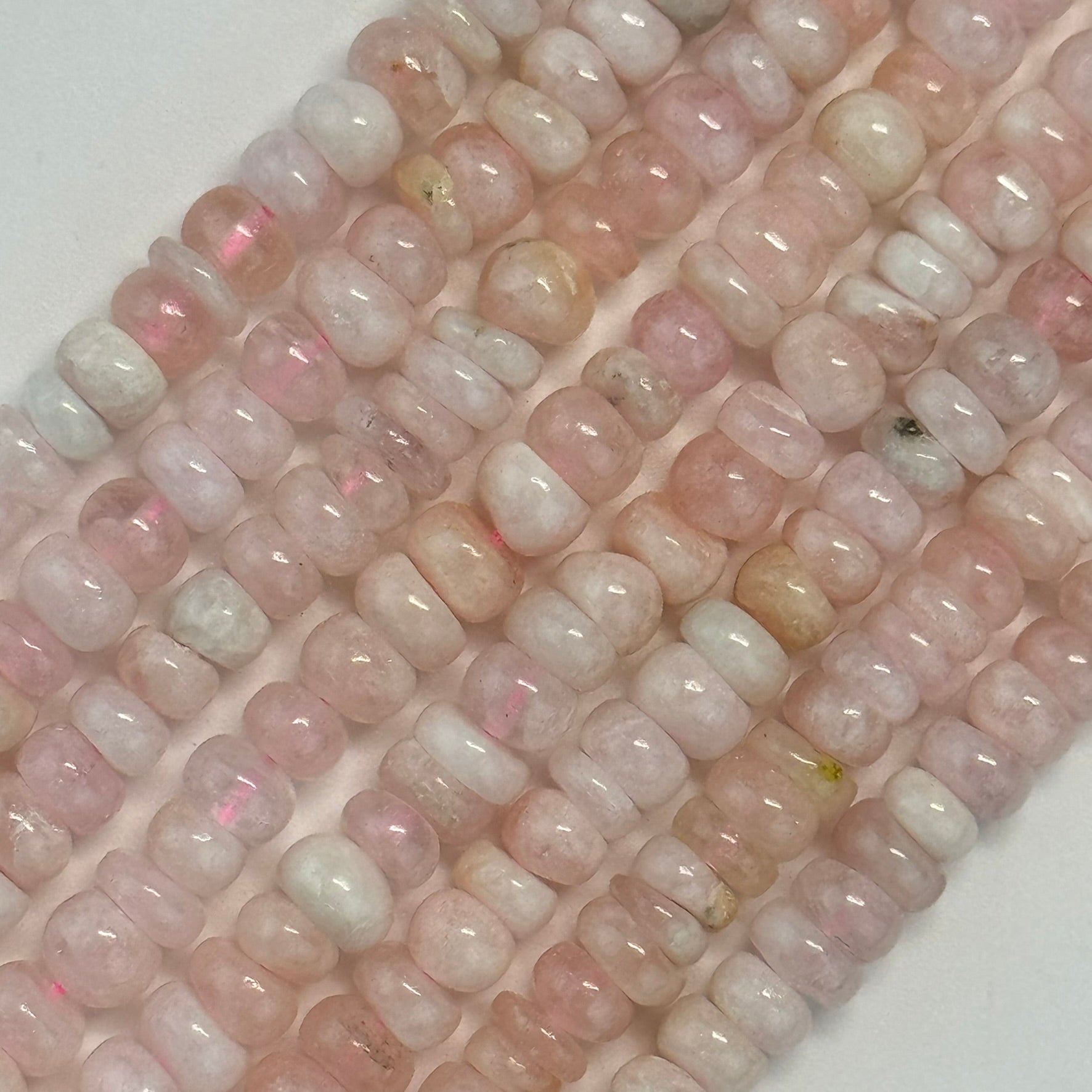
Rondelle Beads - Polished Collection
Explore our collection of Rondelle Beads with polished finish, perfect for elegant and timeless jewelry designs. Each bead is expertly smoothed to enhance its natural color and shine.
View All Polished Rondelle Beads
The Rising Popularity of Black Tourmaline in the Jewelry Market
In recent years, black tourmaline has gained significant popularity in the jewelry market, becoming a sought-after gemstone for both fashion and spiritual purposes. Its bold, dark appearance provides a striking contrast to traditional gemstones, making it a stylish choice for modern jewelry designs. Black tourmaline is now frequently used in rings, bracelets, earrings, and pendants, often set in silver or gold to enhance its deep color. As minimalistic and edgy jewelry trends continue to grow, black tourmaline's sleek and versatile look appeals to those seeking unique, statement-making accessories.
Beyond its aesthetic appeal, the demand for black tourmaline jewelry has surged due to its association with protection and grounding energies. Many people believe that black tourmaline helps shield against negative energy and electromagnetic radiation, making it a favorite in spiritual and wellness communities. This has led to an increase in handmade and artisanal jewelry pieces featuring raw or polished black tourmaline, catering to individuals who value both beauty and metaphysical benefits in their accessories.
The affordability of black tourmaline compared to other precious gemstones has also contributed to its rising popularity. Unlike diamonds or rubies, black tourmaline offers a luxurious and distinctive appearance without an exorbitant price tag, making it accessible to a wider range of consumers. With its growing presence in designer collections and handmade jewelry shops, black tourmaline continues to establish itself as a fashionable and meaningful gemstone in today's jewelry market.
Why Black Tourmaline Is Gaining Popularity in Jewelry
Black tourmaline has seen a surge in popularity in the jewelry market due to a combination of fashion trends, spiritual beliefs, and its affordability. As bold, dark gemstones become more desirable, black tourmaline stands out for its sleek and modern appeal, fitting well with minimalist and statement jewelry designs. Its versatility allows it to be used in both casual and high-end pieces, making it an attractive option for designers and consumers alike.
Another major factor driving its popularity is the growing interest in gemstones with metaphysical properties. Black tourmaline is widely believed to provide protection against negative energy, stress, and even electromagnetic radiation from electronic devices. With more people embracing crystal healing and wellness practices, jewelry featuring black tourmaline has become a favorite choice for those seeking both style and spiritual benefits.
Additionally, black tourmaline is more affordable than many other gemstones, offering an elegant and powerful look without a high price tag. This makes it accessible to a broader audience, from casual jewelry buyers to collectors and spiritual enthusiasts. As demand for meaningful and unique gemstones grows, black tourmaline continues to rise in popularity, securing its place as a must-have stone in today's jewelry market.
Is Black Tourmaline Affordable?
Yes, black tourmaline is an affordable gemstone compared to many other crystals and precious stones. Its widespread availability and natural abundance make it more budget-friendly, even for high-quality specimens. While raw and polished black tourmaline pieces are relatively inexpensive, factors such as size, clarity, and craftsmanship in jewelry settings can influence the price. Despite these variations, black tourmaline remains an accessible option for those seeking both stylish and metaphysical jewelry without a high price tag.
Which Black Tourmaline is Trending Right Now?
The most trendy Black Tourmaline is the Faceted Black Tourmaline Beads in various sizes. These beads are favored for their sleek appearance, which adds a modern touch to jewelry pieces. They're particularly popular for creating statement pieces like bracelets, necklaces, and earrings due to their strong energy properties. Black Tourmaline, known for its protective qualities, is also in demand among those who appreciate crystals for their healing attributes, making it a go-to stone for spiritual and fashion-forward jewelry designs.
Trending Hues of Black Tourmaline:
- Deep Black: The classic hue of Black Tourmaline, symbolizing strength, protection, and grounding.
- Green Tourmaline: Often found in a more earthy tone, this hue offers a more vibrant, protective, and healing energy, making it popular for modern jewelry.
The Discovery of Tourmaline: A Gemstone's Fascinating History
The discovery of tourmaline dates back to the 1500s, when Portuguese explorers first encountered the gemstone in Brazil. Initially, the explorers mistakenly believed that the colorful stones were emeralds, due to their vibrant green hues. However, it wasn't until the 1800s that scientists officially recognized tourmaline as a distinct mineral, thanks to its unique range of colors, which includes hues of green, pink, blue, yellow, and even black. The name "tourmaline" is derived from the Sinhalese word "turmali," meaning "mixed color," reflecting the wide variety of hues that the gemstone can exhibit. Today, tourmaline is highly valued for its beauty and rarity, especially in the jewelry industry.
Which Countries Are Known for Tourmaline, and Which One is the Most Famous?
Tourmaline is found in many countries around the world, with notable deposits in regions like Brazil, the United States, Sri Lanka, Madagascar, and Afghanistan. Brazil is particularly famous for producing some of the most exceptional and diverse tourmaline specimens, including the renowned Paraíba tourmaline, known for its vibrant neon blue and green colors. The United States, particularly in California, also has rich deposits of tourmaline, including the famous pink and red varieties. While tourmaline is abundant globally, Brazil remains the most well-known and significant source, due to the high quality and unique colors of the gemstones it produces, making it a major player in the gemstone market.
How to Make Your First Black Tourmaline Bracelet
To make your first black tourmaline bracelet, follow these simple steps:
-
Gather Your Materials: You'll need black tourmaline beads, a stretchy cord or jewelry wire, a clasp (optional), and tools like scissors or jewelry pliers.
-
Measure Your Wrist: Measure the circumference of your wrist to determine how much cord or wire you'll need. Add a bit of extra length for tying knots or attaching a clasp.
-
String the Beads: Start by threading the black tourmaline beads onto the cord or wire. You can mix the tourmaline beads with other stones or spacers if you'd like.
-
Secure the Ends: If you're using stretchy cord, tie a knot at the ends and secure it tightly. If you're using wire, you can attach a clasp with jewelry pliers.
-
Final Touches: Adjust the bracelet to fit your wrist and check for any loose ends or knots. Once you're happy with the fit, trim off any excess cord or wire.
What Can Black Tourmaline Be Combined With in a Bracelet?
Black tourmaline can be beautifully combined with a variety of gemstones and materials to create stunning and balanced bracelets. Here are some great options:
-
Clear Quartz: Combining black tourmaline with clear quartz enhances the grounding and protective properties of both stones. Clear quartz amplifies energy, making the combination both spiritually powerful and visually striking.
-
Amethyst: The deep purple hue of amethyst contrasts beautifully with the dark tones of black tourmaline, and both stones are known for their protective qualities. This combination is perfect for those looking for both aesthetic beauty and spiritual healing.
-
Citrine: The warm, golden tones of citrine create a beautiful contrast with the dark black tourmaline, bringing balance to the bracelet. Citrine is also associated with abundance, adding a positive energy to the piece.
-
Hematite: Hematite's metallic sheen pairs wonderfully with black tourmaline, reinforcing the grounding and protective properties of both stones. The combination creates a bold, strong look.
-
Silver or Gold Spacers: Adding metal spacers between black tourmaline beads creates a modern and polished look. Silver or gold accents can enhance the elegance of the bracelet while complementing the natural beauty of the tourmaline.
-
Lava Stone: Lava stones add a rugged, earthy texture to black tourmaline bracelets. Both stones are associated with grounding, making this a popular combination for those seeking strength and stability.
What is the Logic of Using Color Combinations with Black Tourmaline in Jewelry?
The logic behind combining black tourmaline with other stones in jewelry, especially considering color, is to enhance both the aesthetic appeal and metaphysical properties of the piece. Here's how color plays a role in these combinations:
-
Clear Quartz (Colorless):
- Aesthetic Reason: The clear, neutral color of quartz provides a clean and crisp contrast to the deep, dark tones of black tourmaline. The combination creates balance and makes both stones stand out.
- Metaphysical Reason: Clear quartz amplifies the energy of other stones, including black tourmaline, enhancing its grounding and protective qualities while promoting clarity.
-
Amethyst (Purple):
- Aesthetic Reason: The rich, purple hue of amethyst contrasts beautifully with the dark, black color of tourmaline, creating an eye-catching visual pairing.
- Metaphysical Reason: Purple is often associated with spiritual growth and intuition. Amethyst complements black tourmaline by balancing its grounding energy with higher spiritual vibrations, creating a harmonious and balanced energy.
-
Citrine (Yellow/Gold):
- Aesthetic Reason: The warm, golden tones of citrine create a vibrant contrast with the dark, earthy colors of black tourmaline, resulting in a bright and cheerful look.
- Metaphysical Reason: Citrine is linked to abundance and positivity, while black tourmaline provides protection and grounding. Combining these two colors can symbolize a balance between the material world (citrine's abundance) and spiritual protection (black tourmaline).
-
Hematite (Metallic Gray/Black):
- Aesthetic Reason: The shiny, metallic finish of hematite complements the matte or deep black color of tourmaline, creating a sleek and modern look.
- Metaphysical Reason: Both stones are grounding and protective, but hematite's metallic sheen adds a unique dimension, reinforcing strength and stability, which is amplified by the dark tones of black tourmaline.
-
Silver/Gold (Metallic):
- Aesthetic Reason: Silver and gold bring a touch of elegance to any jewelry piece. These metallic accents contrast with the matte or opaque black of tourmaline, giving the bracelet a sophisticated look.
- Metaphysical Reason: Silver and gold are often associated with different energetic properties (silver being linked to the moon and intuition, gold to abundance and vitality). When paired with black tourmaline, they add another layer of balance and refinement to the piece.
-
Lava Stone (Black/Gray):
- Aesthetic Reason: Lava stones are typically black or dark gray and share a similar rugged texture to black tourmaline, creating a cohesive and earthy aesthetic.
-
Metaphysical Reason: Lava stone is known for its grounding properties, just like black tourmaline. The combination of the two in a bracelet can enhance stability and strength, both in physical and emotional realms.
Where to Buy High-Quality, Affordable Black Tourmaline in Canada?
If you're looking for high-quality yet affordable black tourmaline, Reza Gem Collection offers a great selection of this powerful gemstone. Based in Canada, Reza Gem Collection is known for providing carefully handpicked tourmaline stones, ensuring that each piece meets high standards for both quality and authenticity. The stones are selected by Reza Piroznia, a skilled gemologist with years of experience in sourcing gemstones. Reza's expertise guarantees that you're purchasing black tourmaline that has not only aesthetic appeal but also excellent metaphysical properties.
Whether you're looking for raw, polished, or bead-cut black tourmaline, Reza Gem Collection offers competitive pricing without compromising on quality. The collection is perfect for both jewelry makers and collectors, ensuring you get the best value for your investment. Reza Piroznia's commitment to quality means you can trust that the black tourmaline stones available at Reza Gem Collection are genuine, responsibly sourced, and come with the benefit of expert knowledge.
Visit Reza Gem Collection to explore a wide range of black tourmaline stones and other gemstones, all at affordable prices, and experience the expertise of Reza Piroznia firsthand.
-
